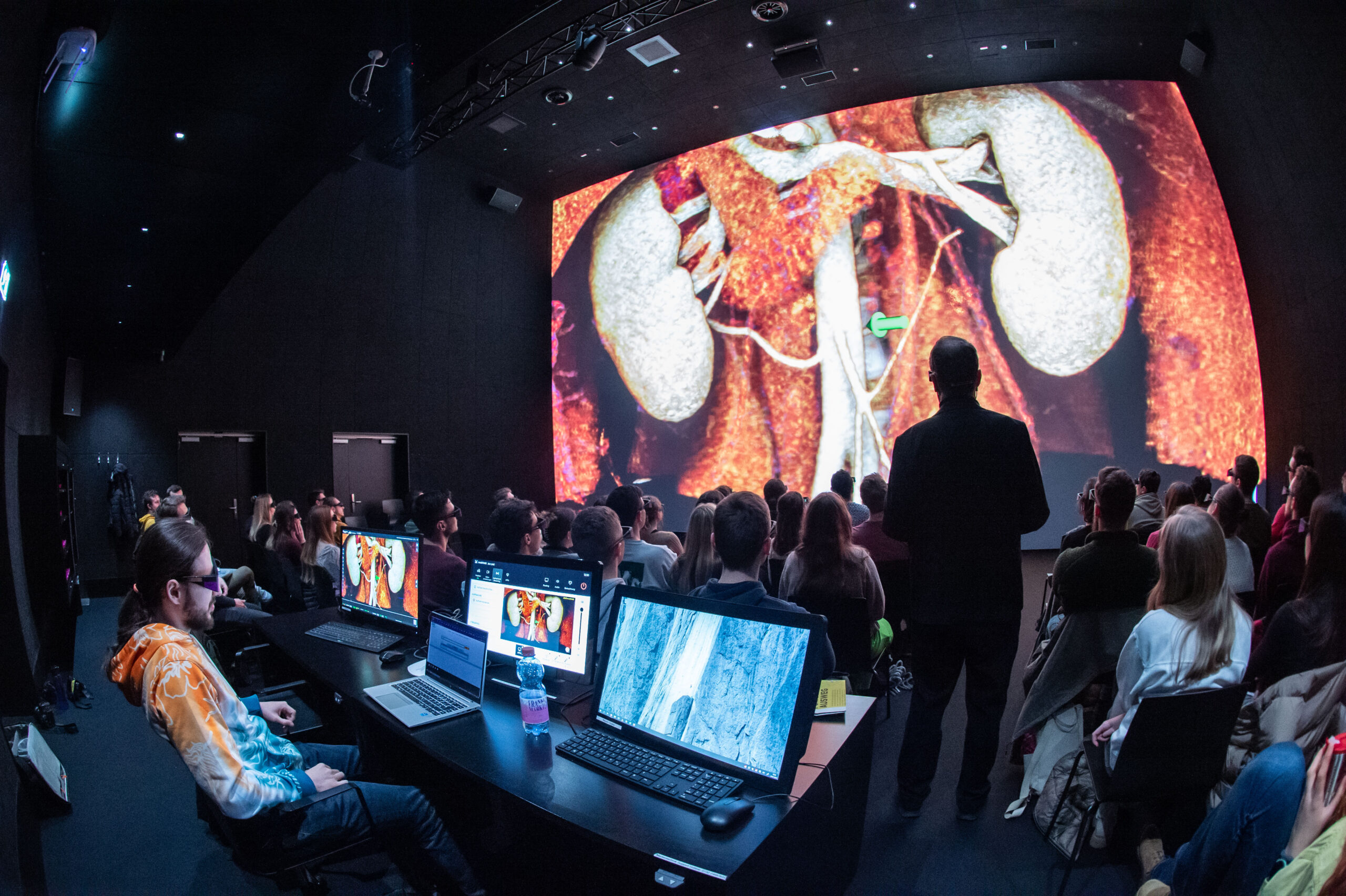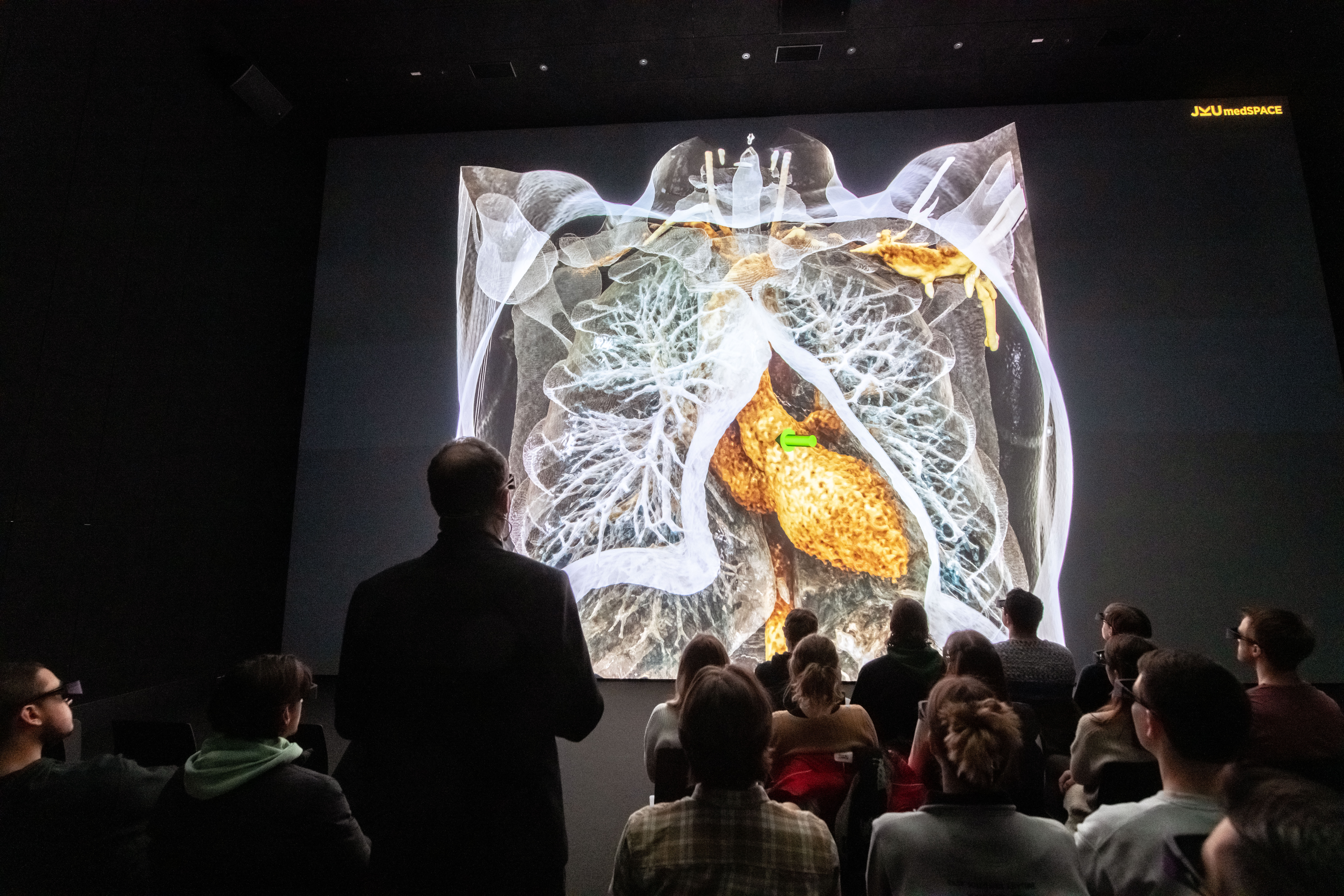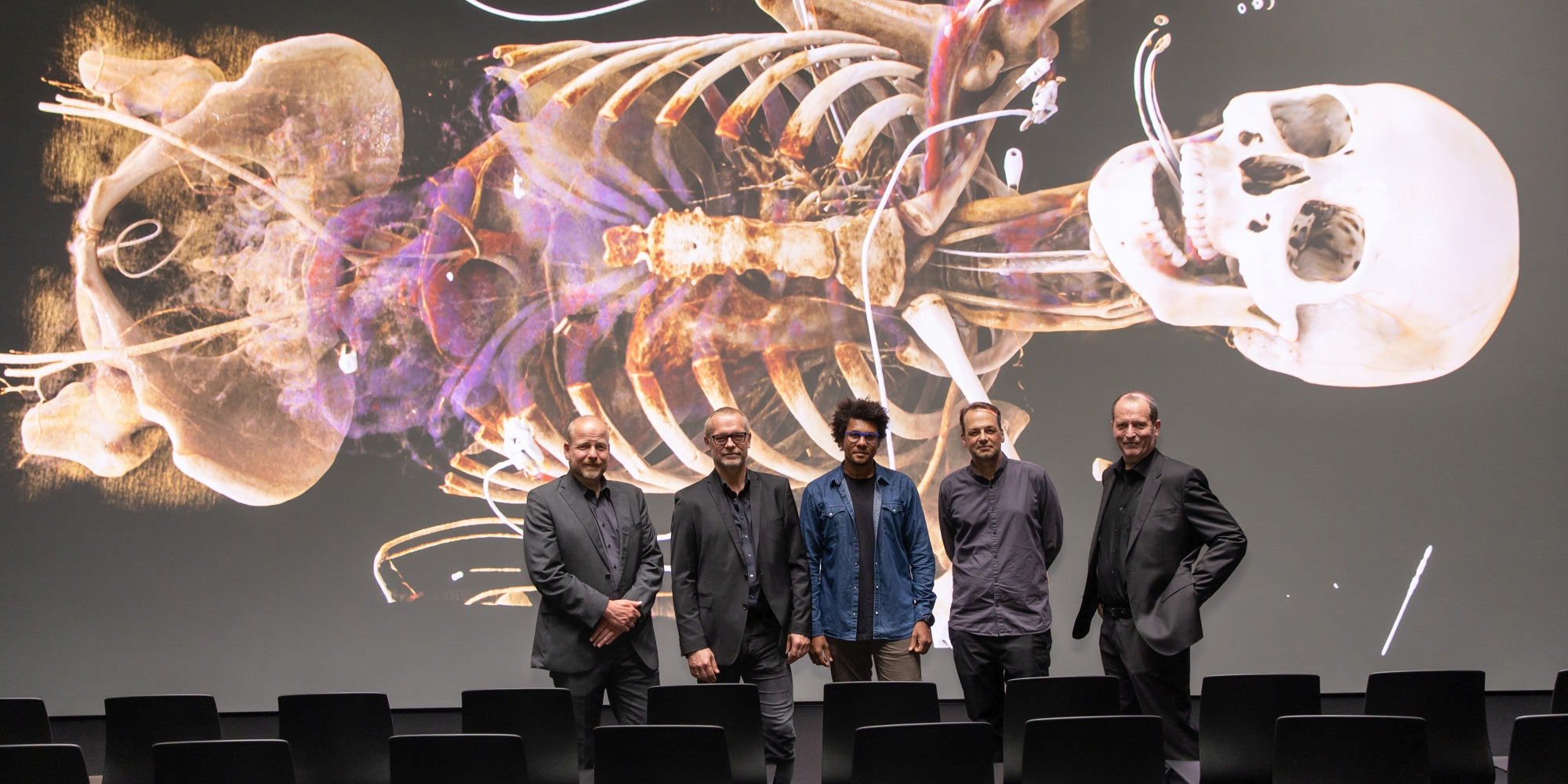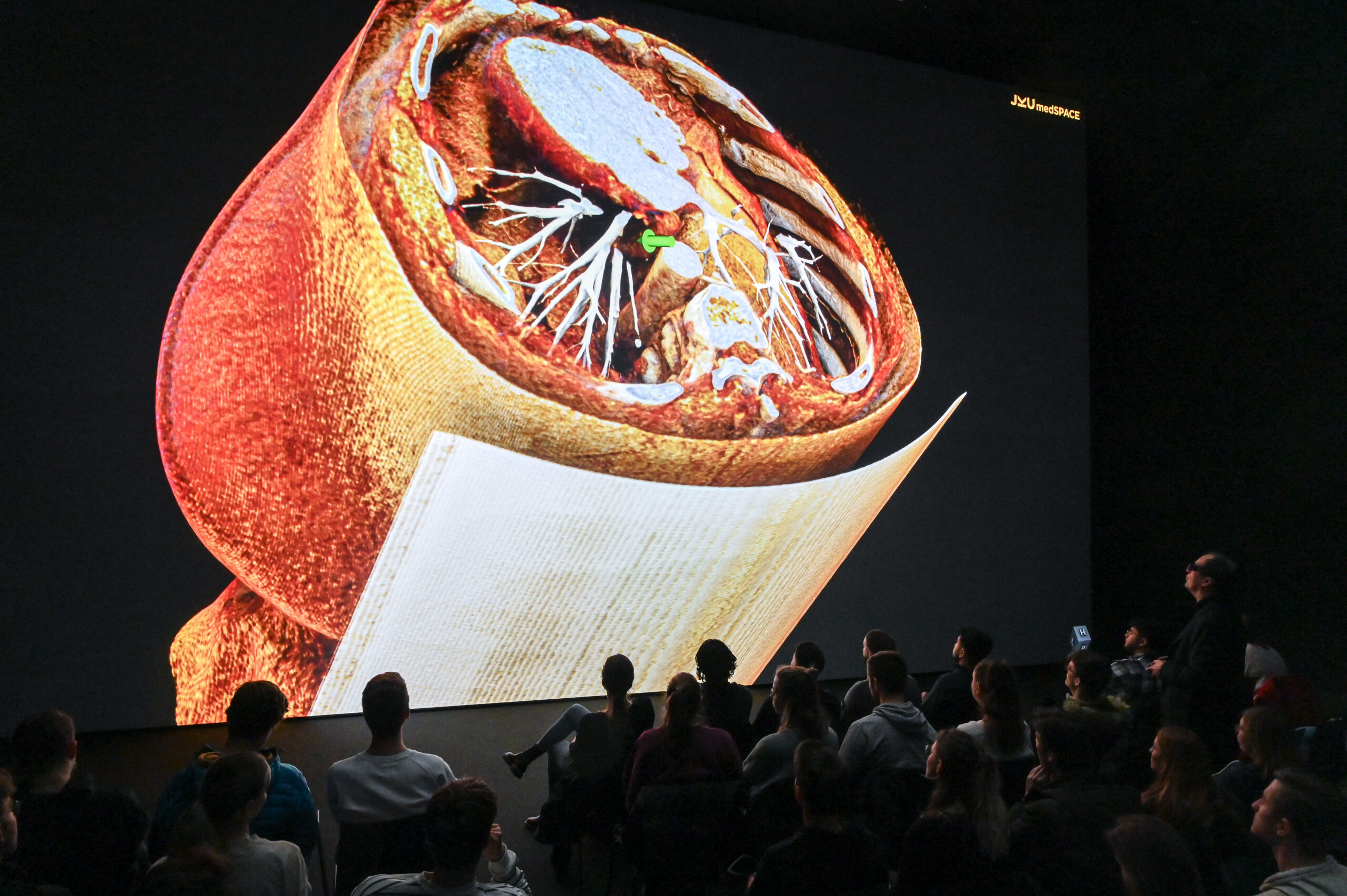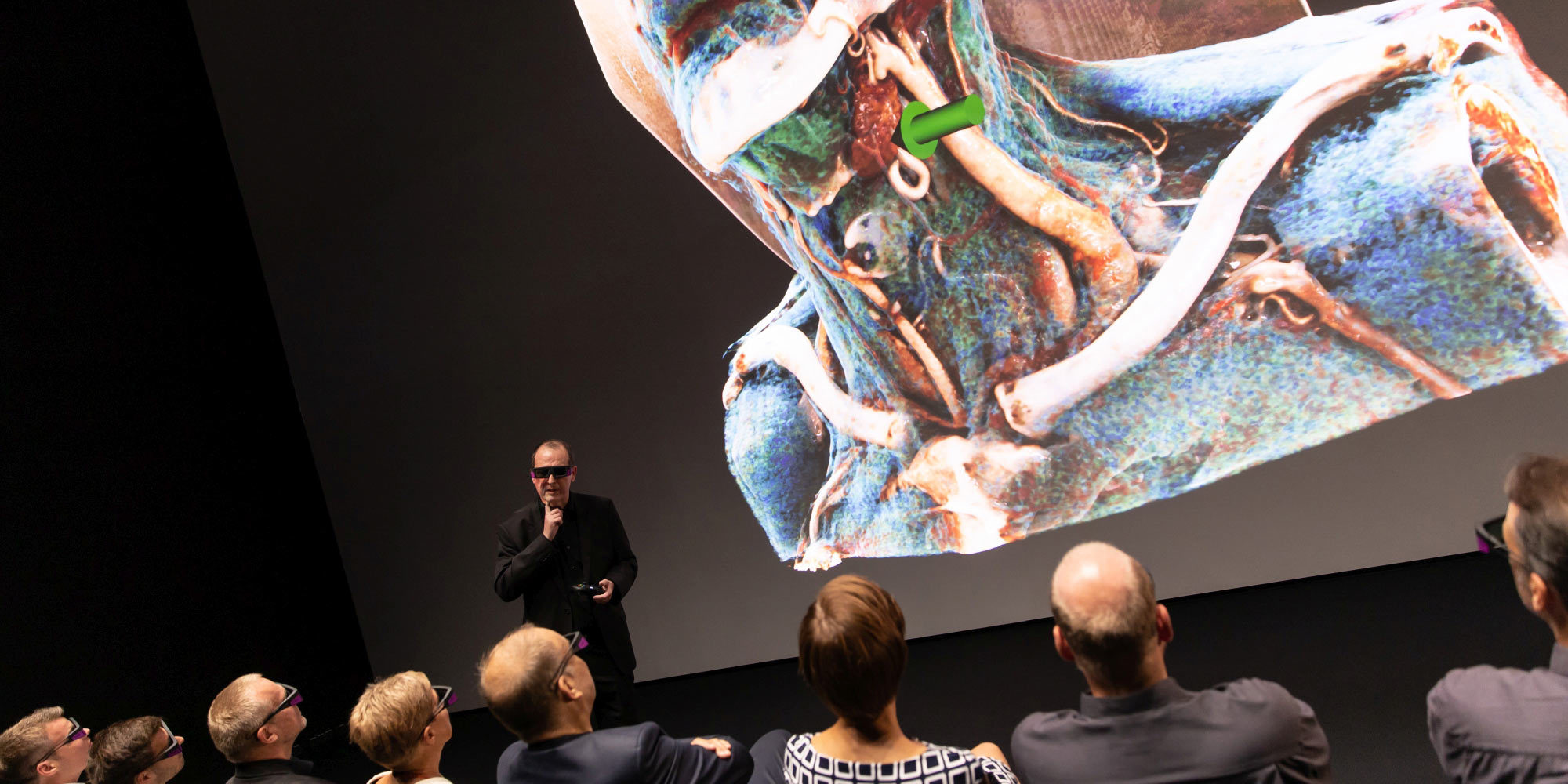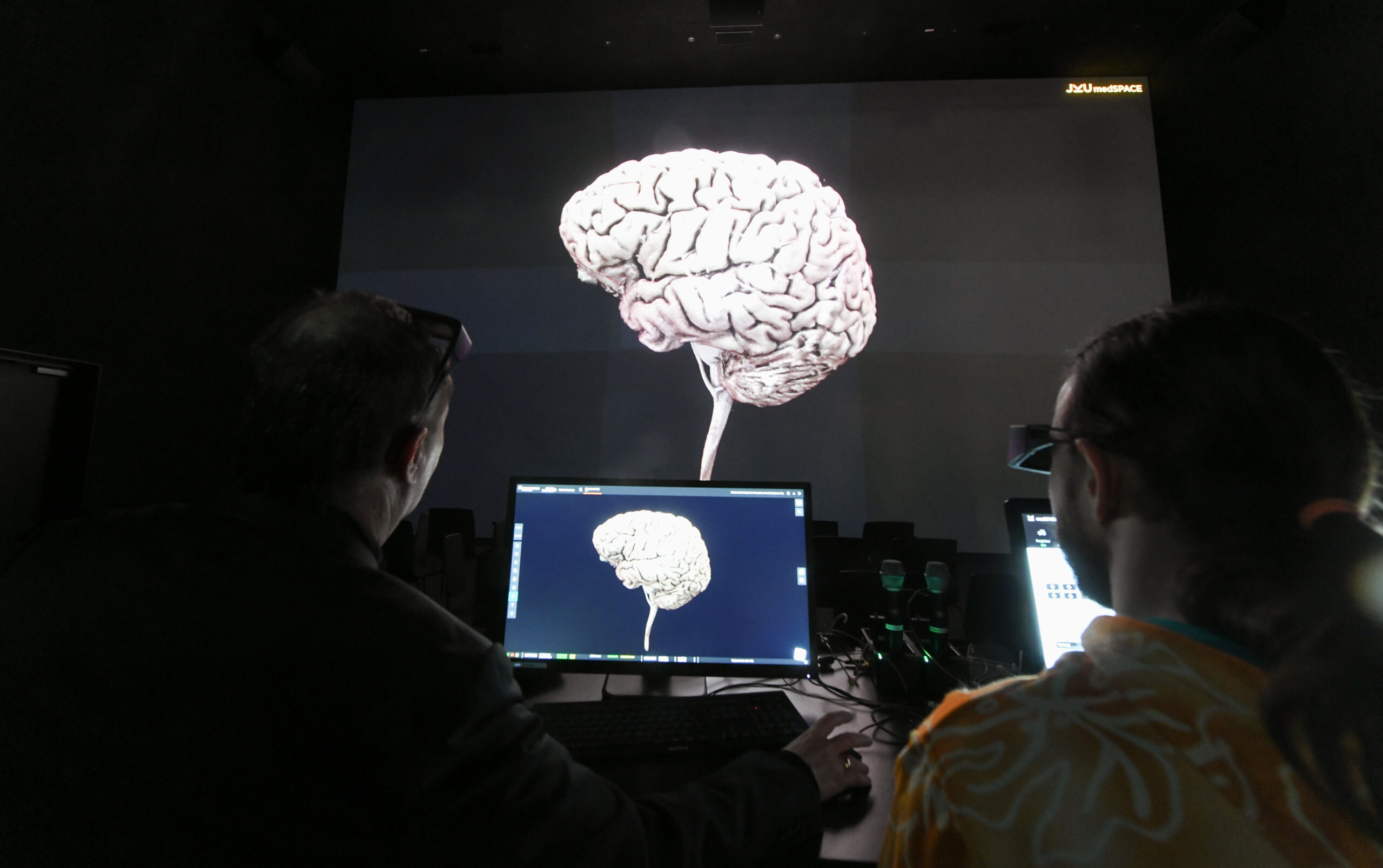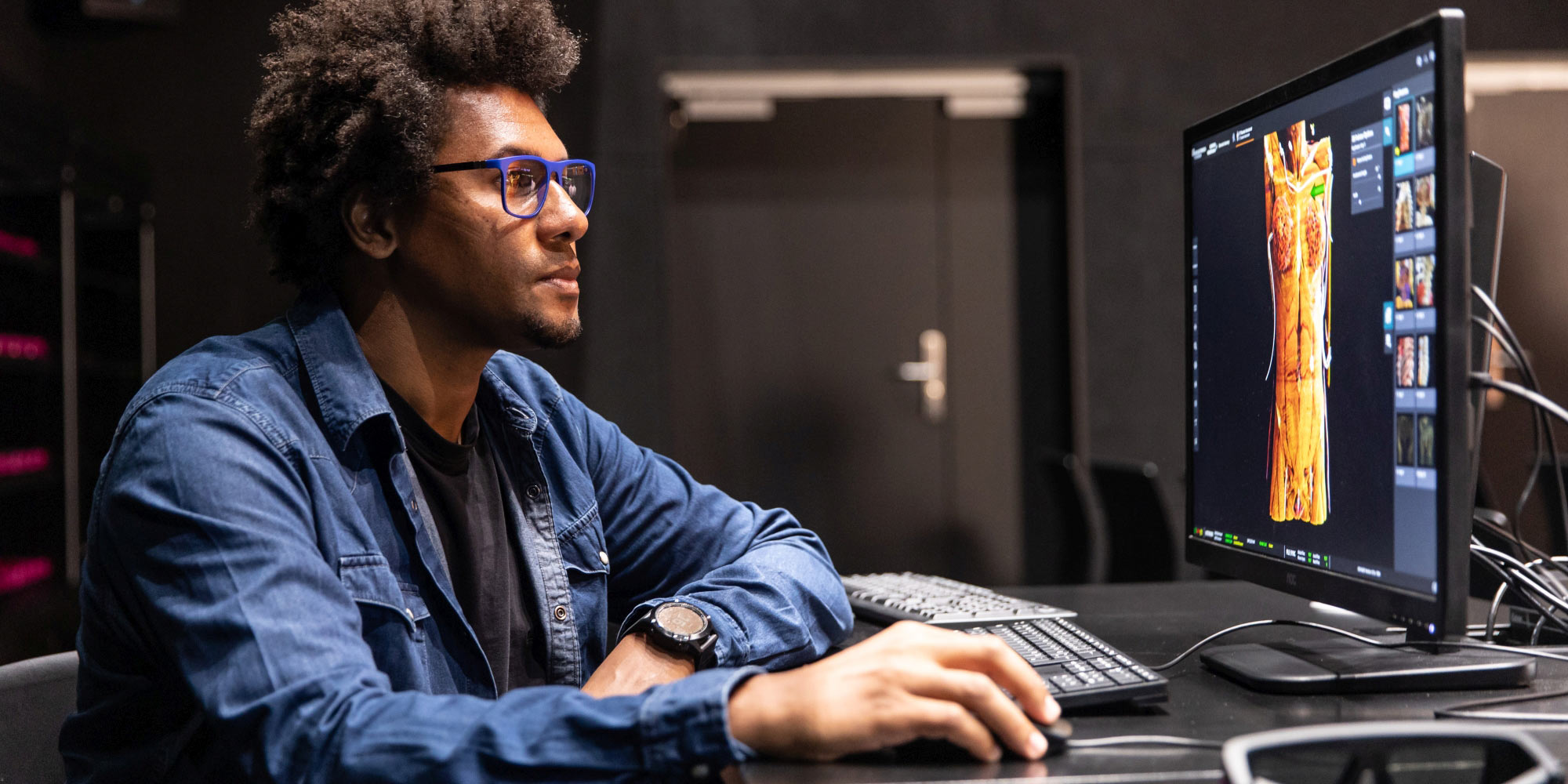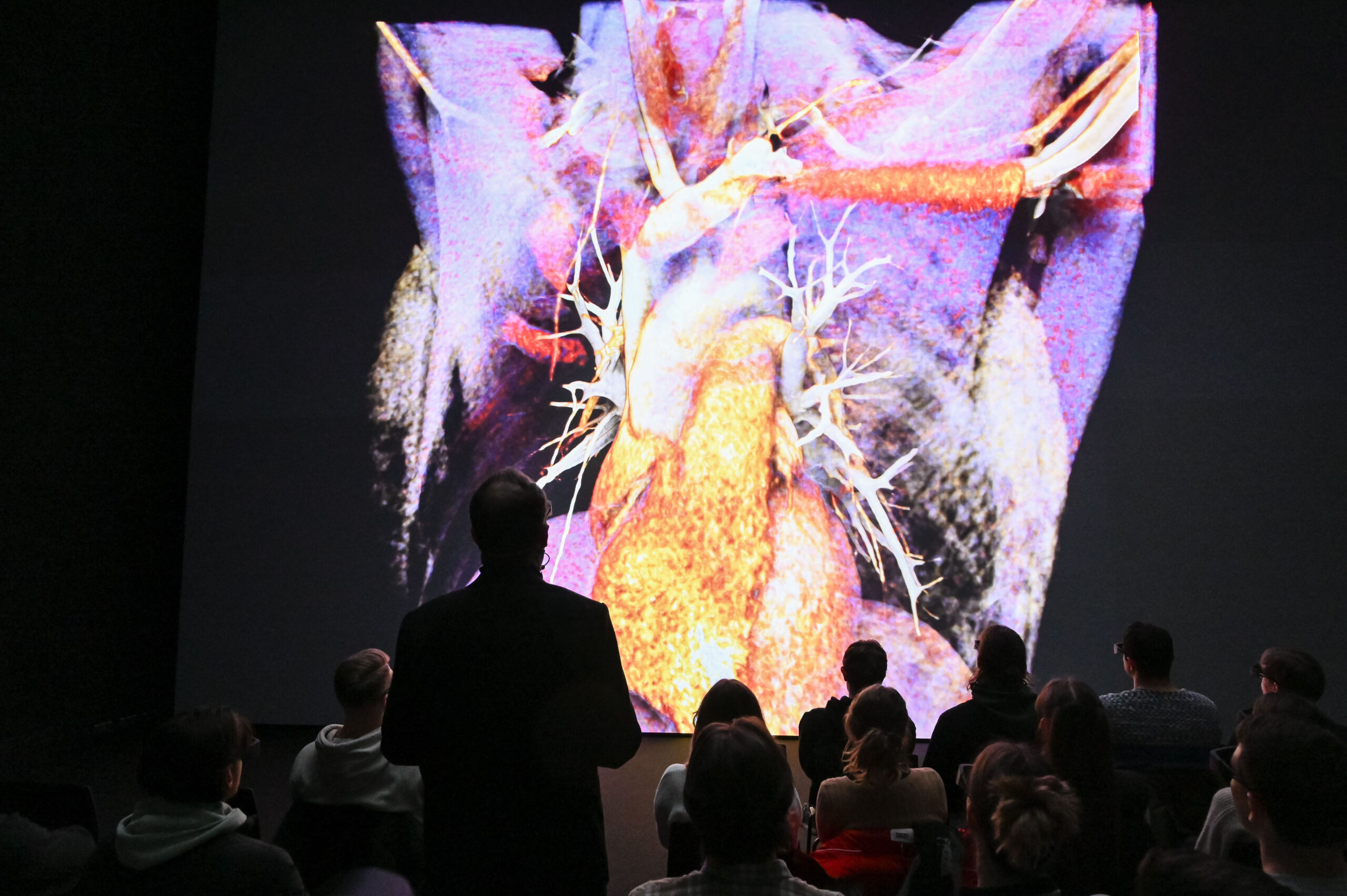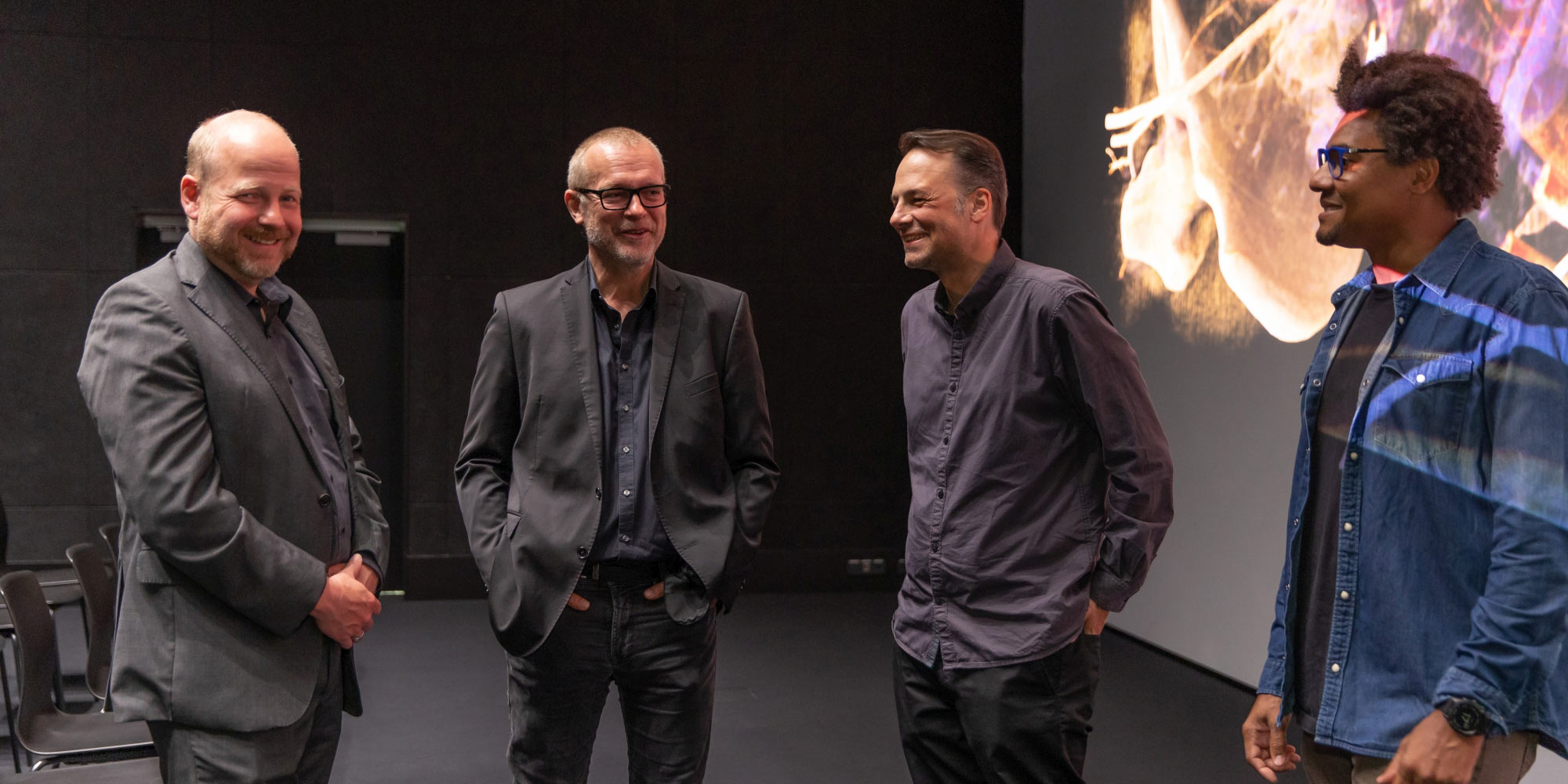The JKU medSPACE is a completely new, worldwide unique venue for teaching anatomy, located at the Johannes Kepler University in Linz. Developed and implemented by the Ars Electronica Futurelab, the JKU medSPACE shows anatomy like never before, in quadruple stereoscopic 3D 8K projection at 14×7 meters: Lecturers and students dive into larger than life, photorealistic 3D images, razor-sharp from all angles and seamlessly zoomable.
The JKU medSPACE is based on the Cinematic Anatomy x Deep Space software – developed over several years by the Ars Electronica Futurelab in cooperation with Siemens Healthineers and the Johannes Kepler University. The multi-award-winning program merges MRI and CTR data of real patients into photorealistic three-dimensional images of human anatomy.
At the JKU medSPACE, medical professors utilize the software to present students with a unique view of the human body – larger than life, from any angle and seamlessly zoomable, in stereoscopic 3D. Organs and blood vessels, muscles and tendons, bones and ligaments, as well as tumors and injuries can be magnified to tiniest details as three-dimensional objects in razor-sharp clarity.
Starting in the fall semester of 2024, another world first emerged from the successful collaboration: with the help of Futurelab technology, the JKU medSPACE at the Johannes Kepler University Linz is now directly connected to the large anatomy lecture hall at the Medical University of Graz. In this virtual 3D anatomy lecture hall, students – over 200 kilometers apart – can follow lectures on virtual anatomy and dissections in stereoscopic 3D live and in real time.
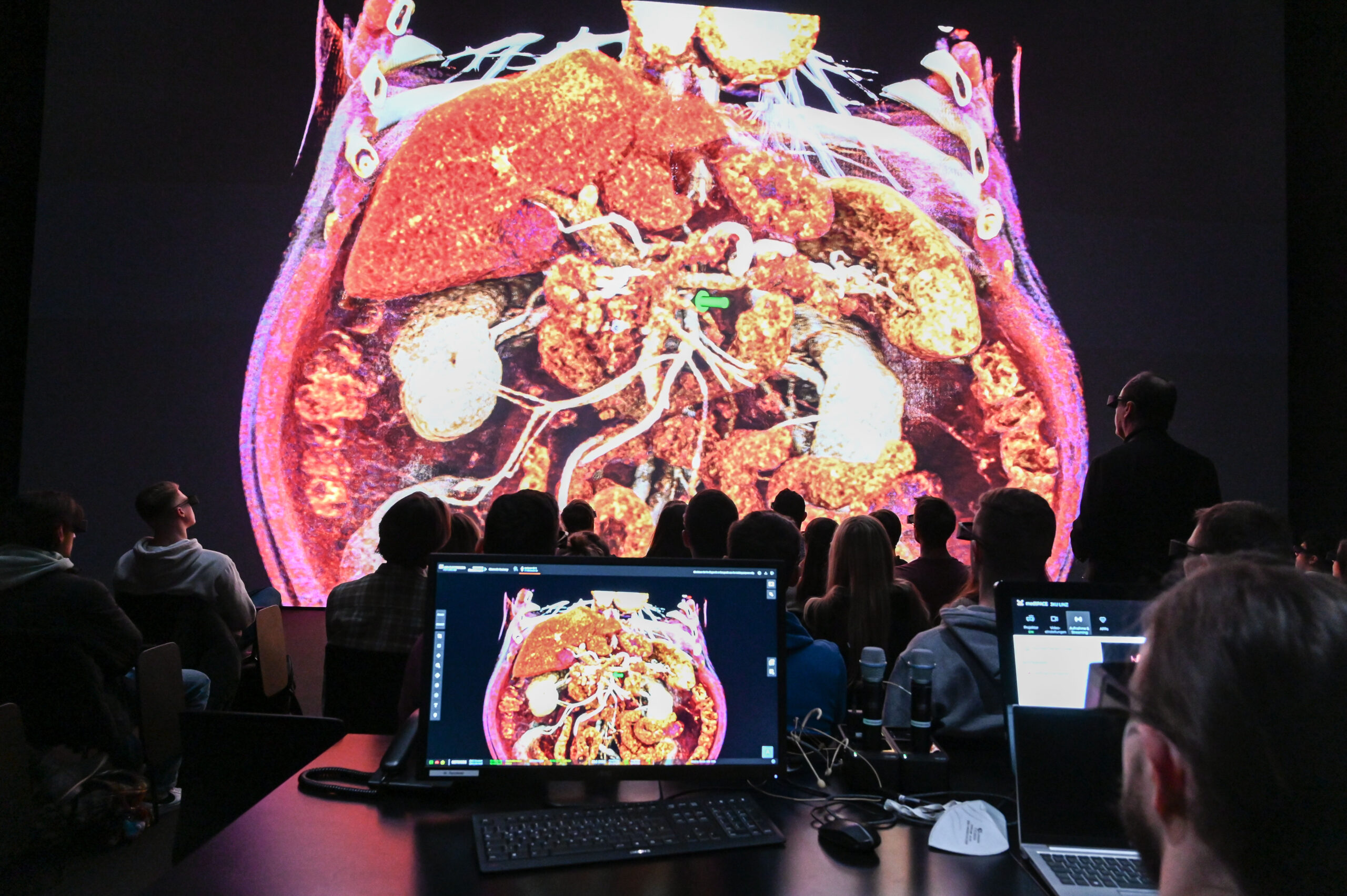
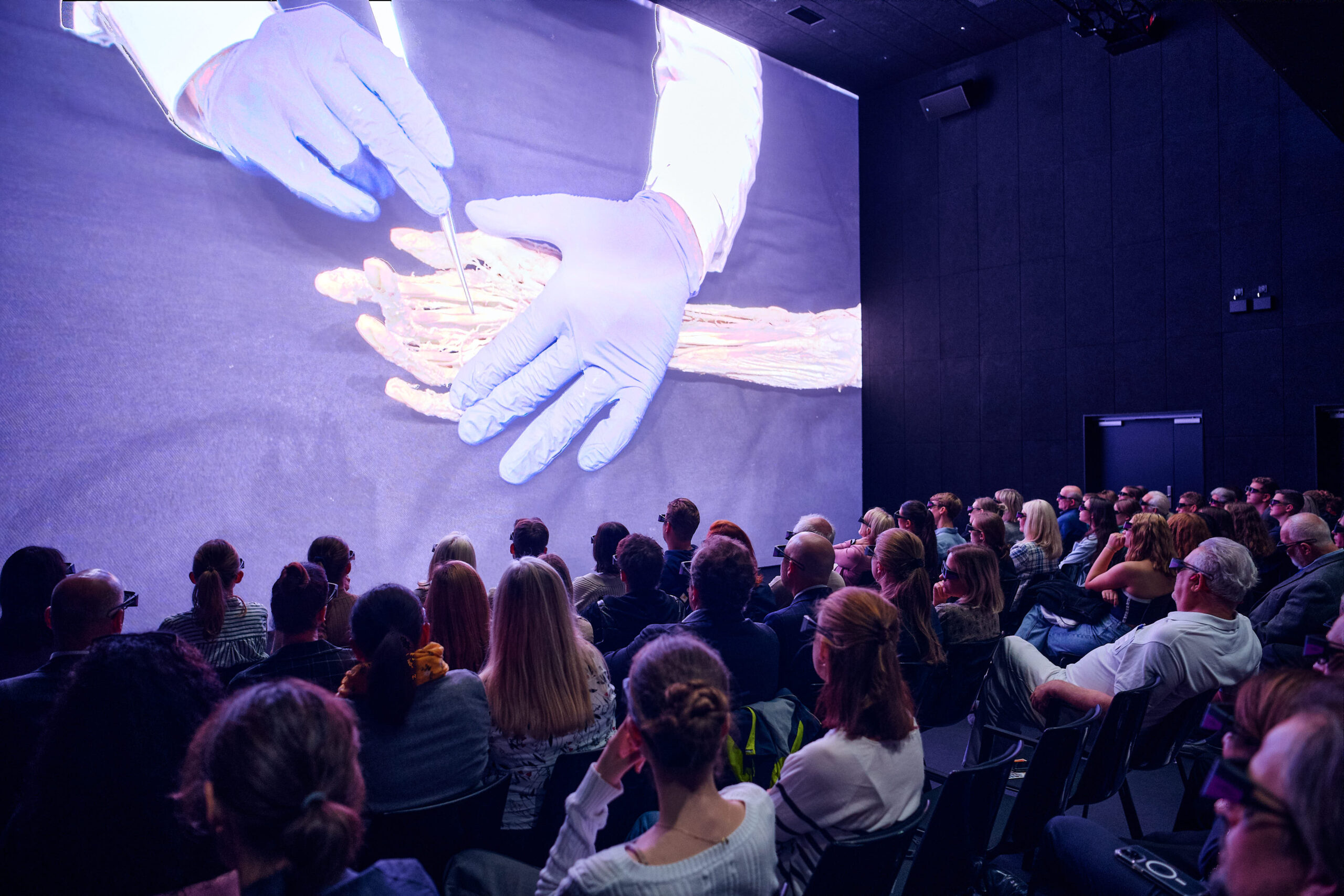
Multiple awards for anatomy innovation
The JKU medSPACE – lecture hall, laboratory, forum and stage at the same time – is a perennial collaborative research project. It is an example of how expertise in different fields, artistic input, curiosity, and openness create a breeding ground for important innovation. After all, it is a starting point for a generation of physicians who will be accustomed to operating alongside robots, to work with AI systems for diagnostics and to learn and teach in virtual environments.
The software behind the JKU medSPACE is Cinematic Anatomy x Deep Space, formerly titled Virtual Anatomy and Cinematic Virtual Anatomy. In 2022, it received the prestigious E&T Innovation Award as “Best Emerging Technology of the Year” as well as the silver medal in the category “Most Innovative Solution in Digital Health and Social Care”. In 2023, the interdisciplinary team won the silver medal as “Innovation and Entrepreneurship Team of the Year” at the Triple E Awards. In 2025, the virtual 3D anatomy lecture hall received the prestigious Inavation Award in the “Healthcare” category.
One-of-a-kind medical data
One of the unique features of the JKU medSPACE at the JKU Linz Faculty of Medicine is that there are no abstracted models: the data comes from real, living patients from the Kepler University Hospital in Linz. Since every patient is different, Cinematic Anatomy x Deep Space in the JKU medSPACE shows a great variety of human anatomy instead of a standardized, idealized version from many anatomical text books. This way, students not only see pathological changes, but get to know the human body as a whole on a different level. The JKU medSPACE is also used to transmit surgeries via two video channels live from an operating room.
Another unique benefit of the JKU medSPACE: The whole process from new data to full-body 3D anatomy takes only a couple of minutes, allowing for immense flexibility and previously unknown teaching opportunities. This is possible by realizing the potential of the Cinematic Anatomy x Deep Space software, developed by the Ars Electronica Futurelab, based on the Cinematic Rendering software by Siemens Healthineers. While Cinematic Rendering is used to import data from MRI and CRT, Cinematic Anatomy x Deep Space adds information, fine tunes and displays the data as photorealistic 3D-images. You can read all about the history of Cinematic Anatomy x Deep Space and how it works on our project page.
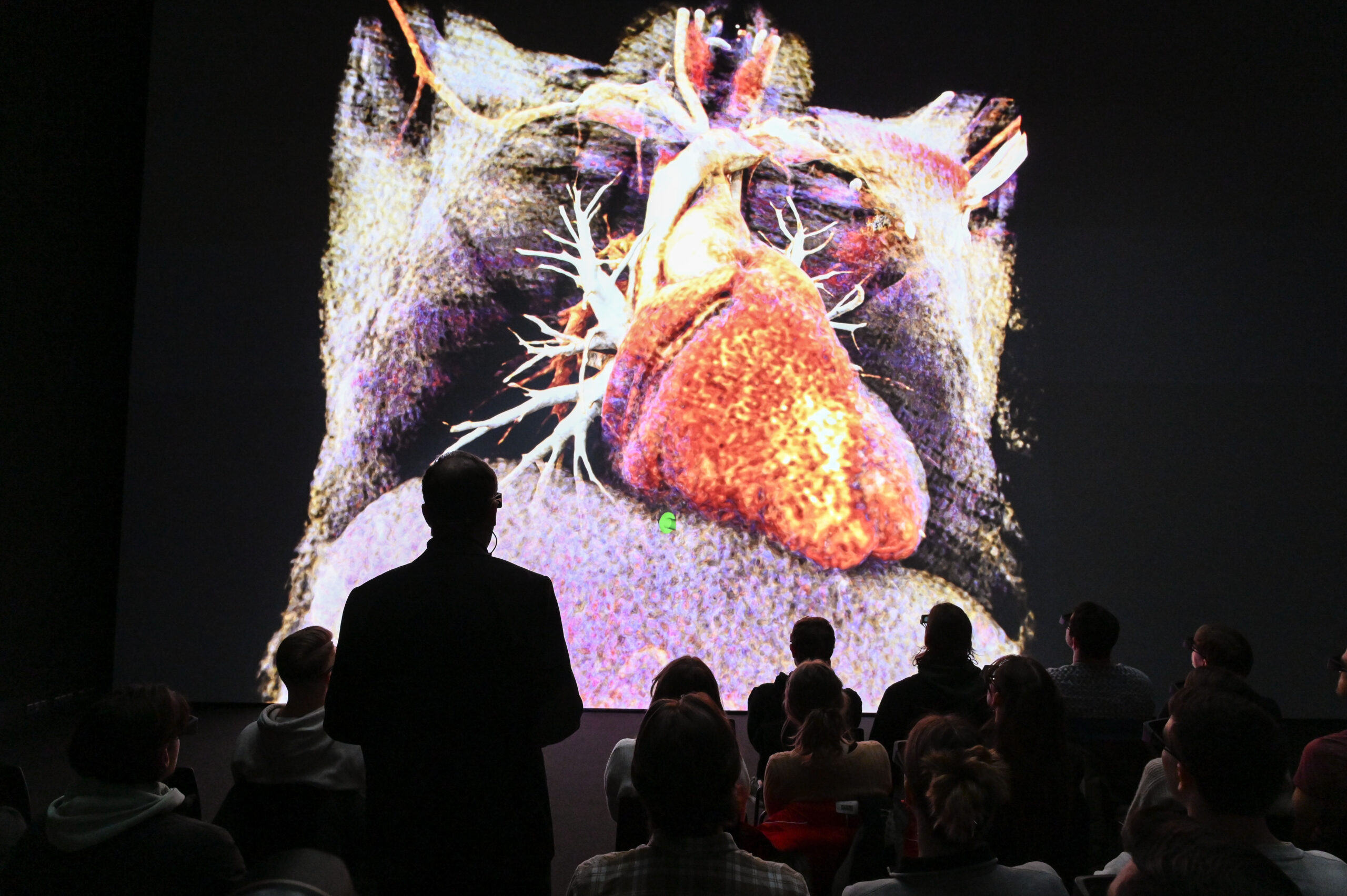
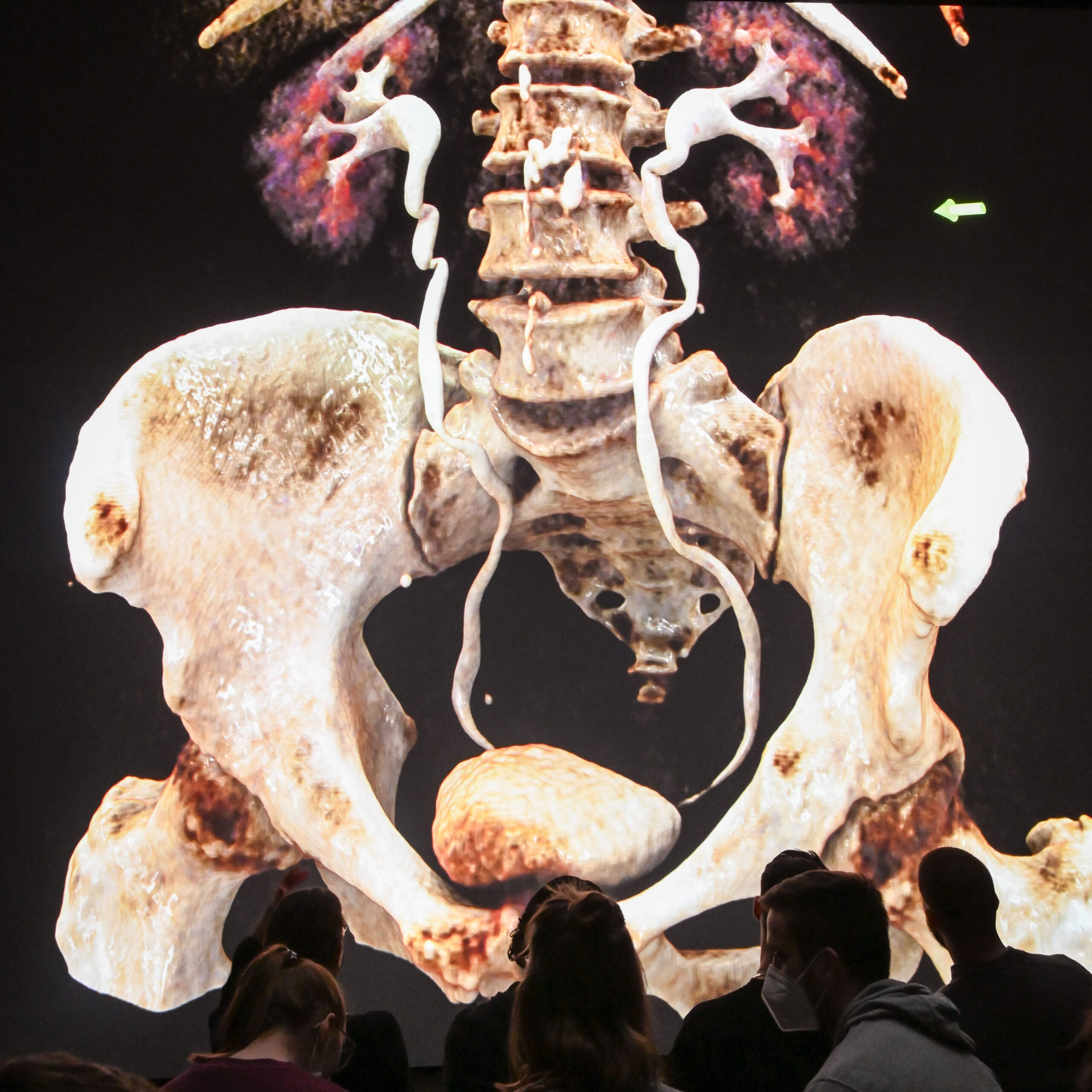
History
The JKU medSPACE is the latest addition to the R&D of the Ars Electronica Futurelab in three-dimensional multi-user environments. In 1996, the CAVE opened at the Ars Electronica Center, in 2009 the first Deep Space opened. Meanwhile, plans for a new faculty of medicine were on the way in Linz, that was founded in 2013. Two years later, three renowned hospitals in the city merged to form the Kepler University Hospital, creating Austria’s second largest hospital.
Also in 2015, the Cinematic Rendering prototype by Siemens was first shown in Deep Space 8K, thanks to an initiative led by Prof. Dr. Franz Fellner – presently Director of the Central Radiology Institute at Kepler University Hospital. A year later Virtual Anatomy opened to the public at the Ars Electronica Center.
Due to the success, Virtual Anatomy became a regular lecture for medical students at the Deep Space 8K in 2018. In 2021, the new buildings for the Faculty of Medicine in Linz were opened, including the JKU medSPACE – planned and constructed by the Ars Electronica Futurelab, with an enhanced version of Virtual Anatomy. In 2022, the Deep Space 8K was remodelled with Deep Space EVOLUTION – new programs include the new version of Cinematic Anatomy x Deep Space, open to the public for the first time worldwide. In the fall of 2024, the connection between the JKU medSPACE in Linz and the large anatomy lecture hall at the Medical University of Graz, over 200 kilometers away, was successfully implemented.
Read more about the JKU medSPACE on the Ars Electronica Blog:
- Further innovation award for Futurelab project
- Prestigious innovation award for Futurelab project
- The Future of Medical Studies, Today
Credits
Ars Electronica Futurelab: Friedrich Bachinger, Florian Berger, Roland Haring
Ars Electronica Solutions: Patrick Müller
Medical-Scientific Director: Prim. Univ.-Prof. Dr. Franz Fellner (Kepler Universitätsklinikum/Department of Radiology)
PARTNER: Siemens Healthineers; Johannes Kepler Universität (JKU); Kepler Universitätsklinikum (KUK)
